WebForum
-
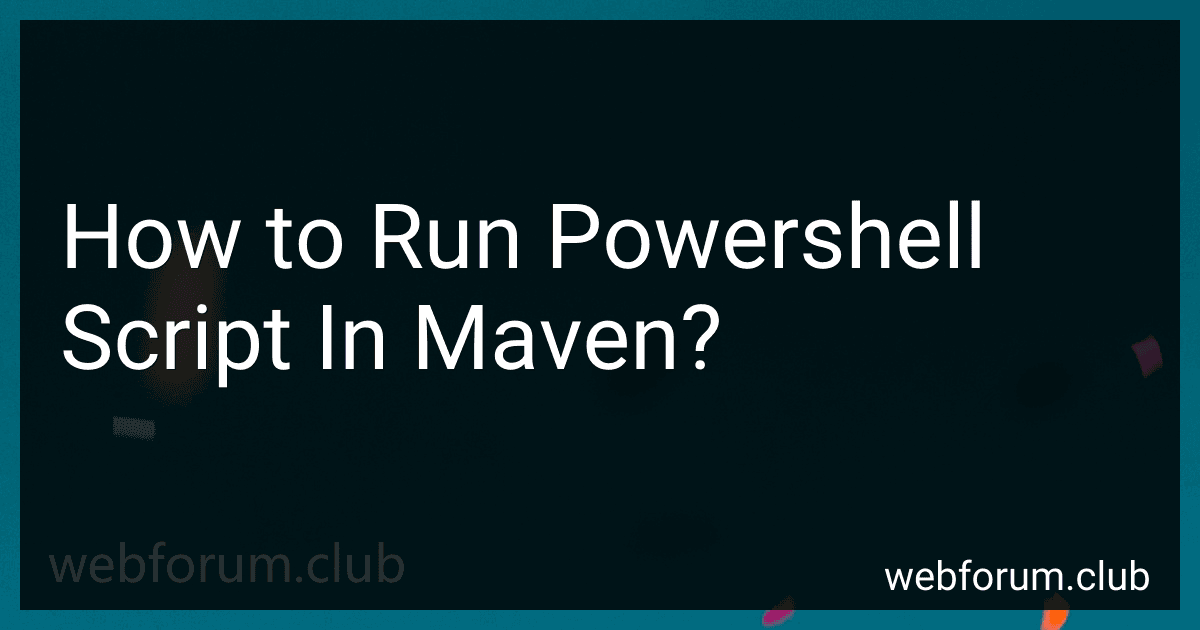 6 min readTo run PowerShell scripts in Maven, you need to use the Maven Exec Plugin. This plugin allows you to execute commands in the system shell directly from your Maven project.First, you need to add the Maven Exec Plugin to your project's pom.xml file. Then, configure the plugin to run your PowerShell script by specifying the appropriate command and arguments.Make sure that the PowerShell script is located in the correct directory within your Maven project.
6 min readTo run PowerShell scripts in Maven, you need to use the Maven Exec Plugin. This plugin allows you to execute commands in the system shell directly from your Maven project.First, you need to add the Maven Exec Plugin to your project's pom.xml file. Then, configure the plugin to run your PowerShell script by specifying the appropriate command and arguments.Make sure that the PowerShell script is located in the correct directory within your Maven project.
-
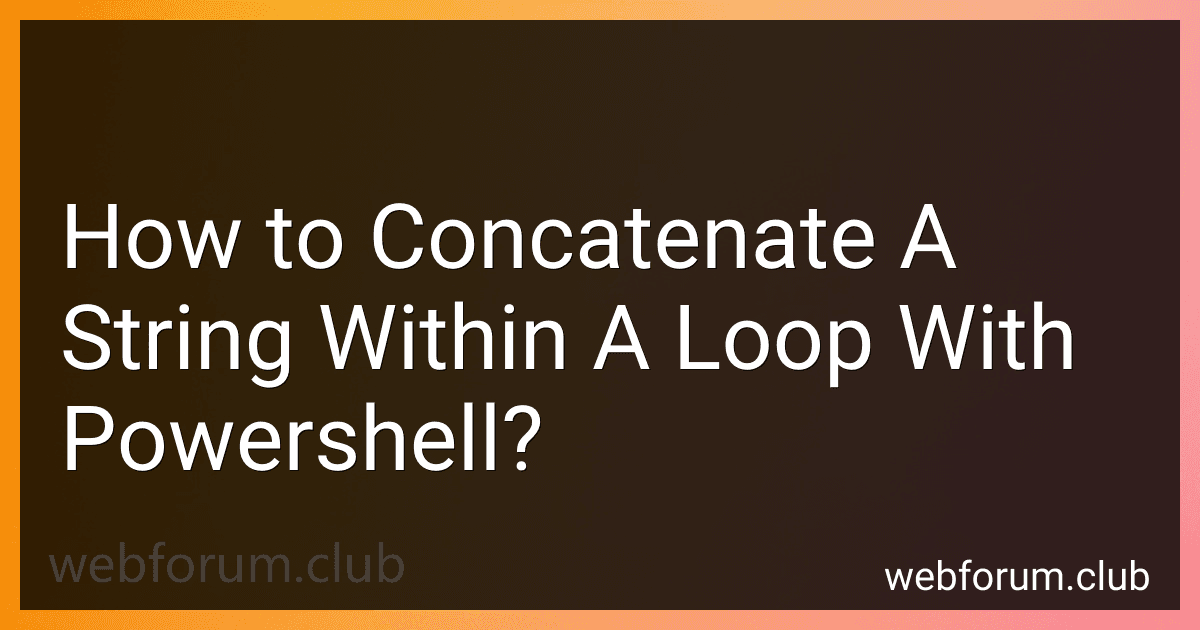 3 min readTo concatenate a string within a loop with PowerShell, you can create a variable to store the concatenated string and then use the loop to append each new string to the variable. Here's an example: $concatenatedString = "" $strings = @("string1", "string2", "string3") foreach ($string in $strings) { $concatenatedString += $string } Write-Output $concatenatedString In this example, we first define an empty string variable called $concatenatedString.
3 min readTo concatenate a string within a loop with PowerShell, you can create a variable to store the concatenated string and then use the loop to append each new string to the variable. Here's an example: $concatenatedString = "" $strings = @("string1", "string2", "string3") foreach ($string in $strings) { $concatenatedString += $string } Write-Output $concatenatedString In this example, we first define an empty string variable called $concatenatedString.
-
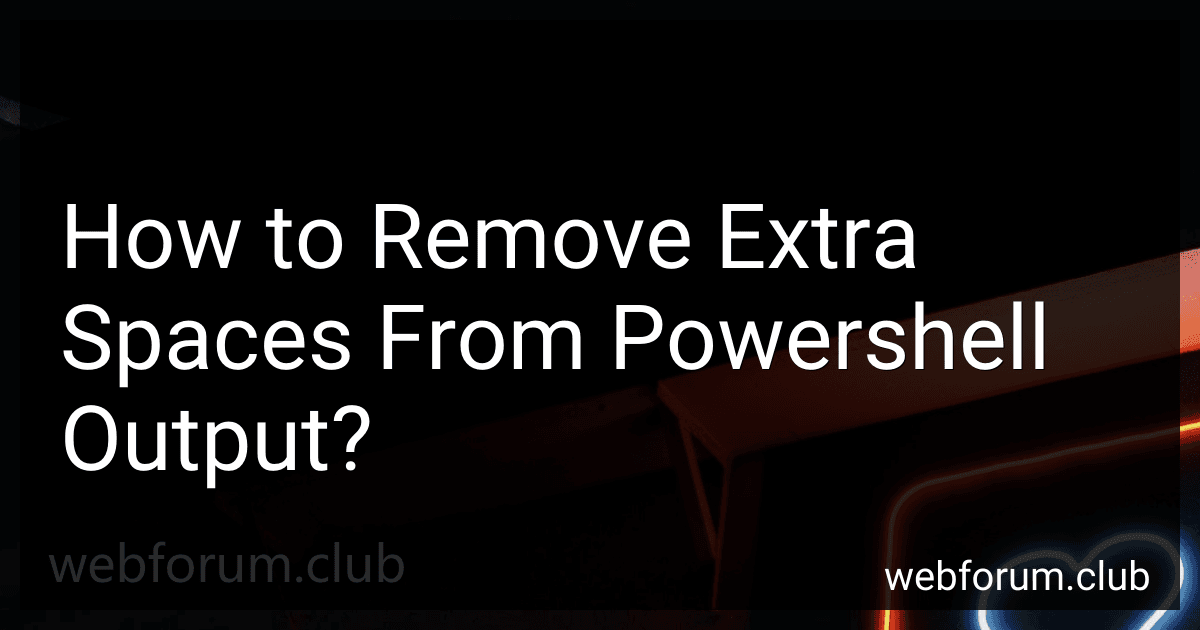 4 min readTo remove extra spaces from PowerShell output, you can use the Trim() method to trim leading and trailing spaces from a string. You can also use the -replace operator with a regular expression to replace multiple spaces with a single space. Another option is to use the -split operator to split the string by spaces and then join it back together with a single space delimiter.
4 min readTo remove extra spaces from PowerShell output, you can use the Trim() method to trim leading and trailing spaces from a string. You can also use the -replace operator with a regular expression to replace multiple spaces with a single space. Another option is to use the -split operator to split the string by spaces and then join it back together with a single space delimiter.
-
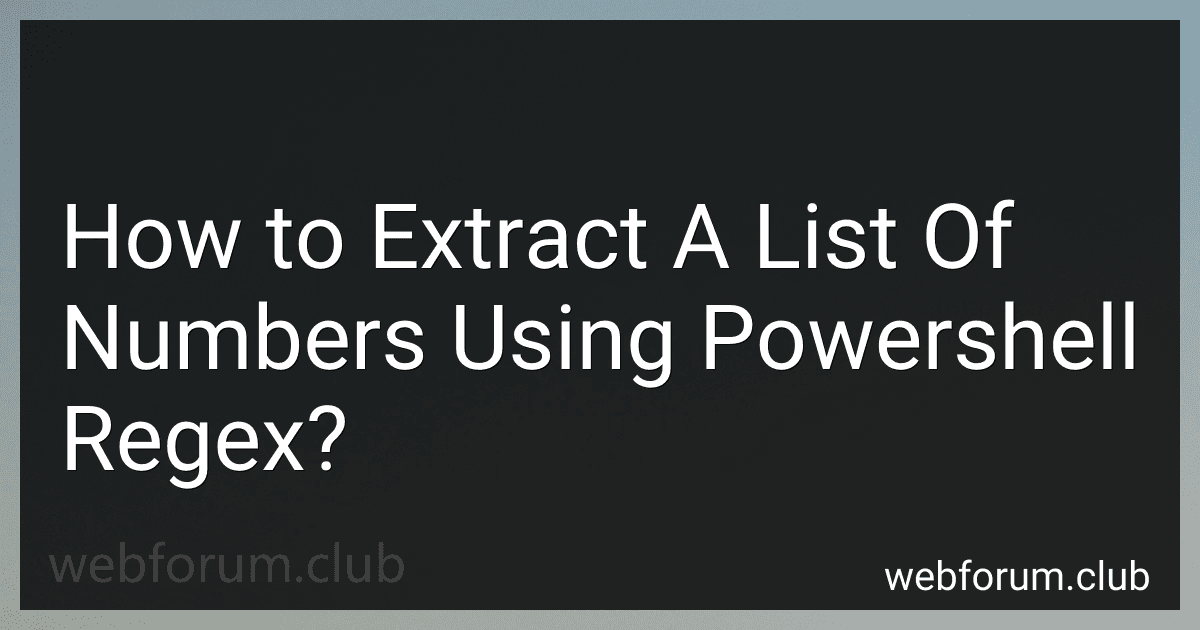 5 min readTo extract a list of numbers using PowerShell regex, you can use the -match operator along with a regular expression pattern that matches numbers. The regular expression pattern \d+ can be used to match one or more digits in a string. By using this pattern with the -match operator, you can extract a list of numbers from a given string in PowerShell.How to validate a phone number using regex in PowerShell.
5 min readTo extract a list of numbers using PowerShell regex, you can use the -match operator along with a regular expression pattern that matches numbers. The regular expression pattern \d+ can be used to match one or more digits in a string. By using this pattern with the -match operator, you can extract a list of numbers from a given string in PowerShell.How to validate a phone number using regex in PowerShell.
-
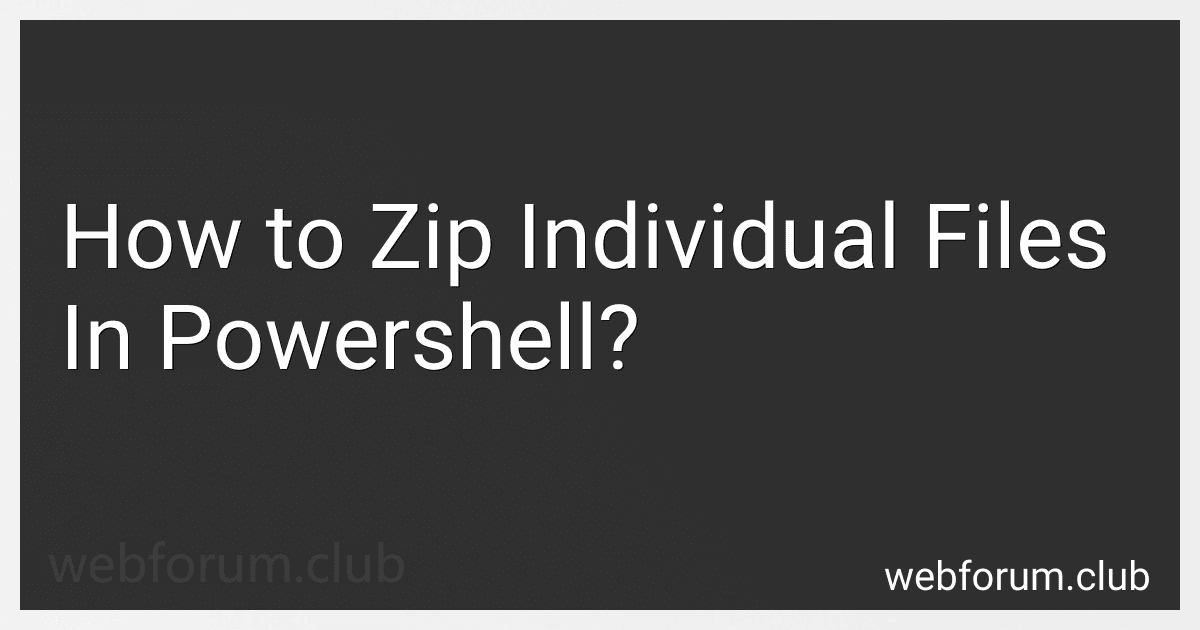 5 min readTo zip individual files in PowerShell, you can use the Compress-Archive cmdlet. In order to do this, you would first need to specify the files you want to include in the zip file by providing the file paths as arguments to the cmdlet. For example, you can use the following command:Compress-Archive -Path "C:\path\to\file1.txt", "C:\path\to\file2.txt" -DestinationPath "C:\path\to\zipped\archive.zip"This command will create a zip file called "archive.
5 min readTo zip individual files in PowerShell, you can use the Compress-Archive cmdlet. In order to do this, you would first need to specify the files you want to include in the zip file by providing the file paths as arguments to the cmdlet. For example, you can use the following command:Compress-Archive -Path "C:\path\to\file1.txt", "C:\path\to\file2.txt" -DestinationPath "C:\path\to\zipped\archive.zip"This command will create a zip file called "archive.
-
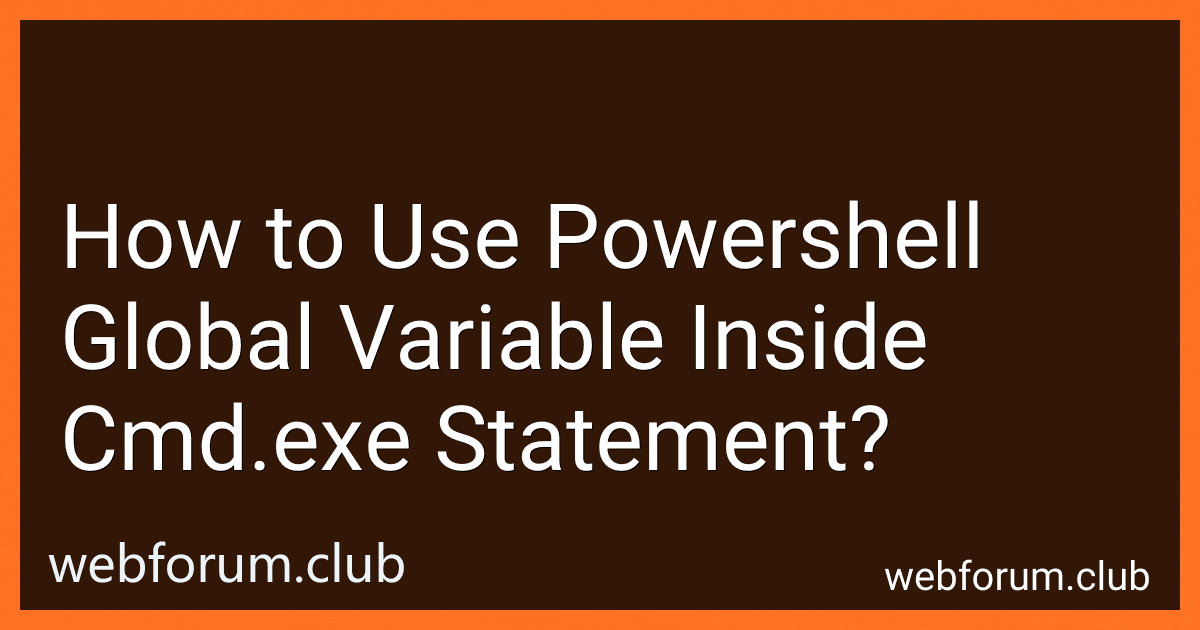 5 min readTo use a PowerShell global variable inside a cmd.exe statement, you can first assign the value of the global variable to a local variable in your PowerShell script. Then, you can pass this local variable as an argument to a cmd.exe statement using the '&' operator. Here is an example: $globalVariable = "Hello" $localVariable = $globalVariable & cmd.
5 min readTo use a PowerShell global variable inside a cmd.exe statement, you can first assign the value of the global variable to a local variable in your PowerShell script. Then, you can pass this local variable as an argument to a cmd.exe statement using the '&' operator. Here is an example: $globalVariable = "Hello" $localVariable = $globalVariable & cmd.
-
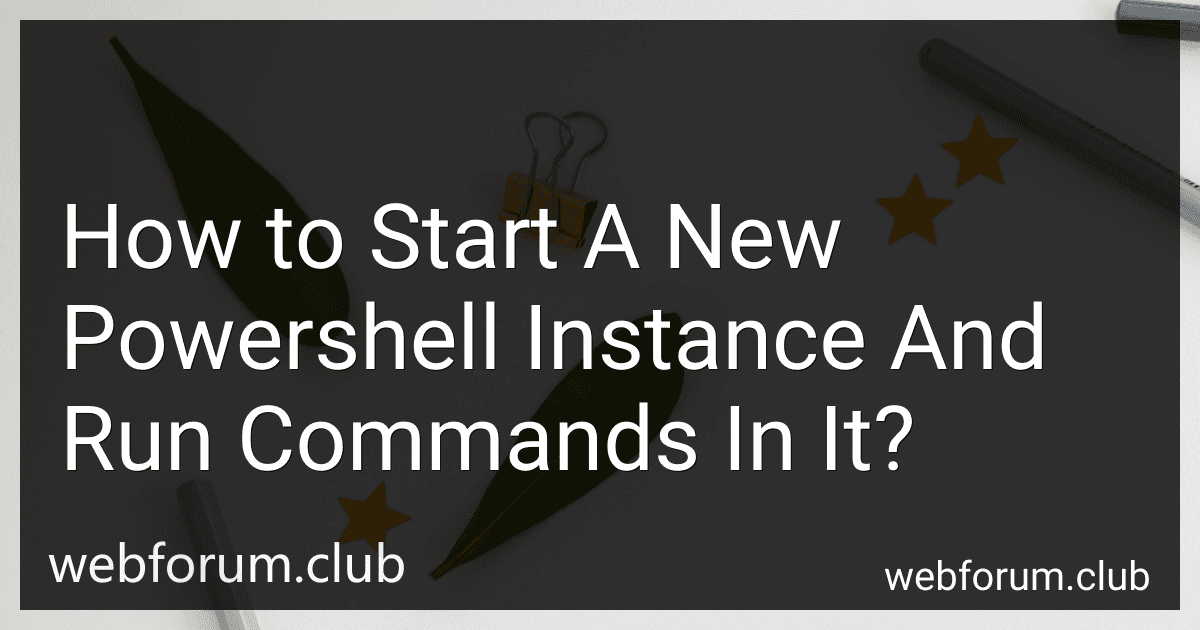 5 min readTo start a new PowerShell instance and run commands in it, you can simply open a PowerShell window by searching for "PowerShell" in the Start menu or by pressing Win + R and typing "powershell".Once the PowerShell window is open, you can begin running commands by typing them directly into the console. If you want to start a new PowerShell instance from within an existing instance, you can use the "Start-Process powershell" command.
5 min readTo start a new PowerShell instance and run commands in it, you can simply open a PowerShell window by searching for "PowerShell" in the Start menu or by pressing Win + R and typing "powershell".Once the PowerShell window is open, you can begin running commands by typing them directly into the console. If you want to start a new PowerShell instance from within an existing instance, you can use the "Start-Process powershell" command.
-
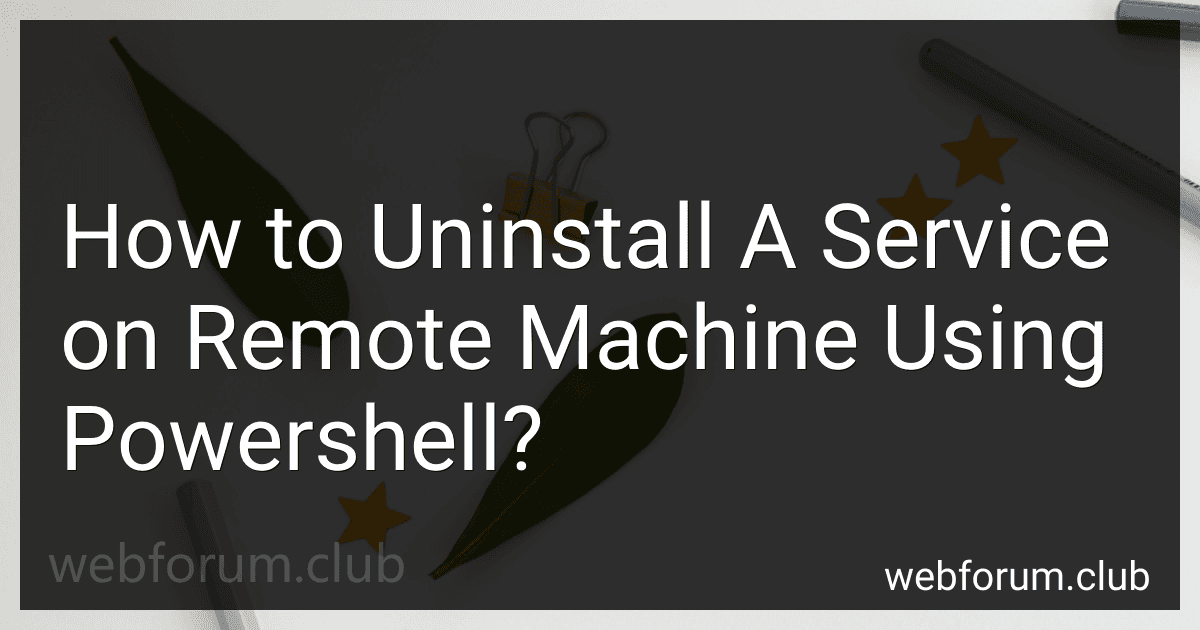 6 min readTo uninstall a service on a remote machine using PowerShell, you can use the Remove-Service cmdlet. First, establish a remote PowerShell session using the Enter-PSSession cmdlet or Invoke-Command cmdlet. Once connected to the remote machine, run the Remove-Service -Name "ServiceName" cmdlet to uninstall the specified service. Make sure to replace "ServiceName" with the actual name of the service you want to uninstall.
6 min readTo uninstall a service on a remote machine using PowerShell, you can use the Remove-Service cmdlet. First, establish a remote PowerShell session using the Enter-PSSession cmdlet or Invoke-Command cmdlet. Once connected to the remote machine, run the Remove-Service -Name "ServiceName" cmdlet to uninstall the specified service. Make sure to replace "ServiceName" with the actual name of the service you want to uninstall.
-
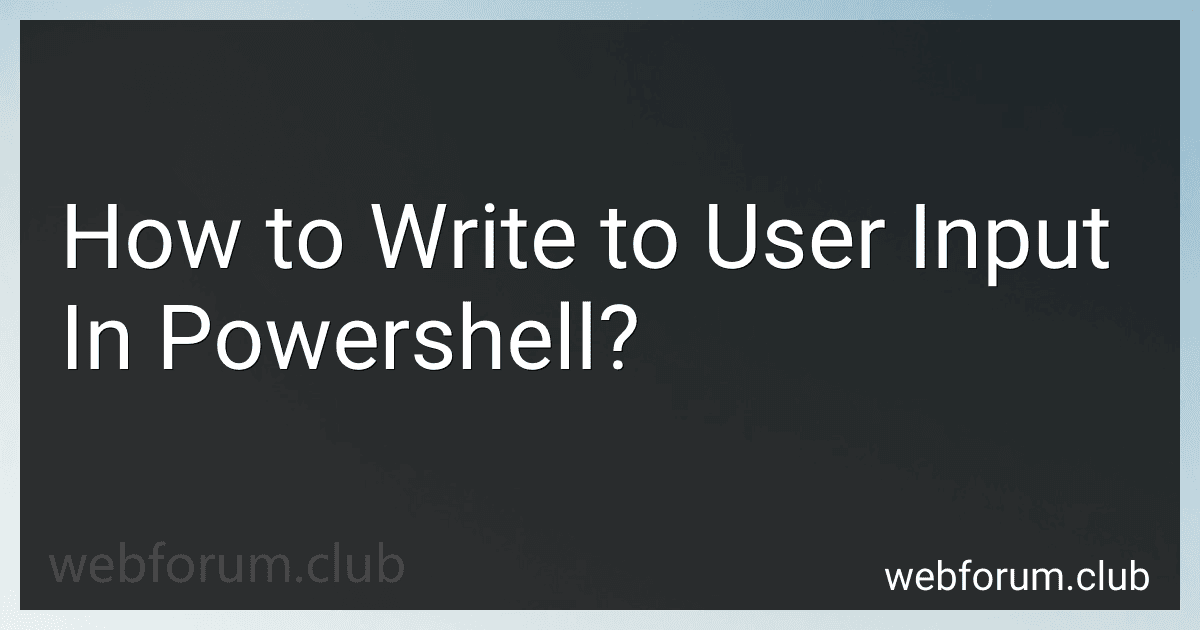 5 min readTo write to user input in PowerShell, you can use the Read-Host cmdlet to prompt the user for input and store the result in a variable. You can then use the Write-Output cmdlet to display the input provided by the user. This allows you to interact with users and gather information dynamically during the execution of your script. Additionally, you can use the Write-Host cmdlet to display a message to the user without storing it in a variable.
5 min readTo write to user input in PowerShell, you can use the Read-Host cmdlet to prompt the user for input and store the result in a variable. You can then use the Write-Output cmdlet to display the input provided by the user. This allows you to interact with users and gather information dynamically during the execution of your script. Additionally, you can use the Write-Host cmdlet to display a message to the user without storing it in a variable.
-
 3 min readTo define and execute PowerShell functions from C#, you can use the System.Management.Automation namespace in the .NET framework. First, define the PowerShell function by creating a new instance of the PowerShell class and using the AddScript method to add the function definition. Next, use the AddParameter method to add any function parameters. Then, call the Invoke method on the PowerShell instance to execute the function.
3 min readTo define and execute PowerShell functions from C#, you can use the System.Management.Automation namespace in the .NET framework. First, define the PowerShell function by creating a new instance of the PowerShell class and using the AddScript method to add the function definition. Next, use the AddParameter method to add any function parameters. Then, call the Invoke method on the PowerShell instance to execute the function.
-
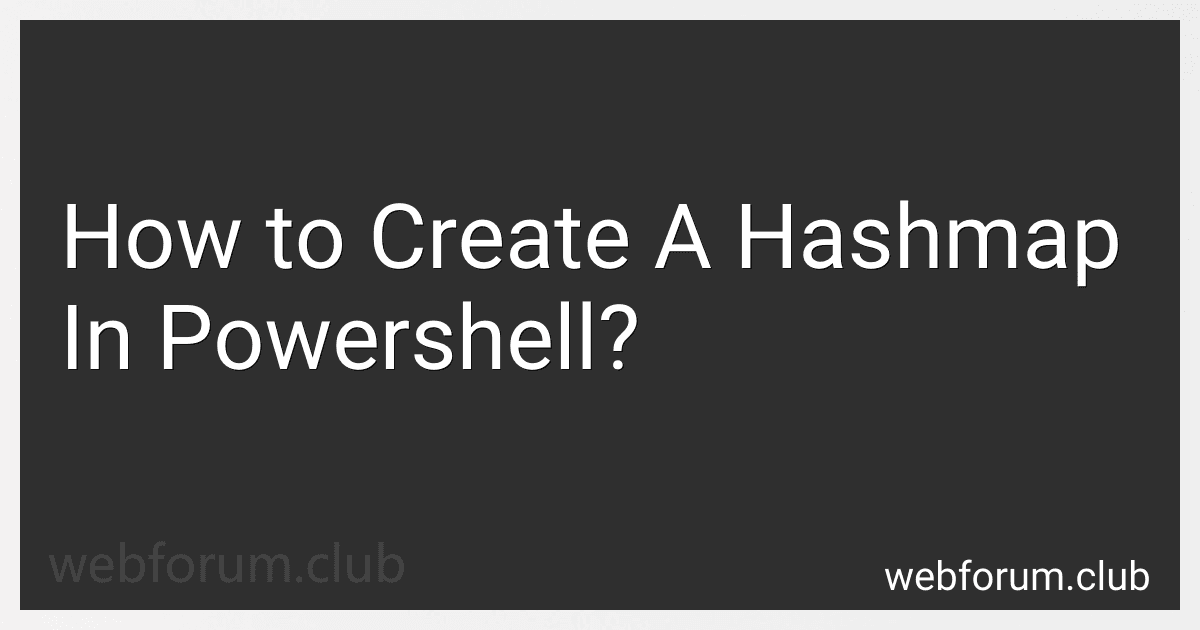 2 min readTo create a hashmap in PowerShell, you can use the @{} syntax followed by key-value pairs separated by a colon. For example: $hashmap = @{ key1 = "value1" key2 = "value2" } You can then access the values in the hashmap by using the key as an index. For example: Write-Host $hashmap["key1"] This will output value1. HashMaps in PowerShell are useful for storing key-value pairs and quickly looking up values based on their keys.
2 min readTo create a hashmap in PowerShell, you can use the @{} syntax followed by key-value pairs separated by a colon. For example: $hashmap = @{ key1 = "value1" key2 = "value2" } You can then access the values in the hashmap by using the key as an index. For example: Write-Host $hashmap["key1"] This will output value1. HashMaps in PowerShell are useful for storing key-value pairs and quickly looking up values based on their keys.